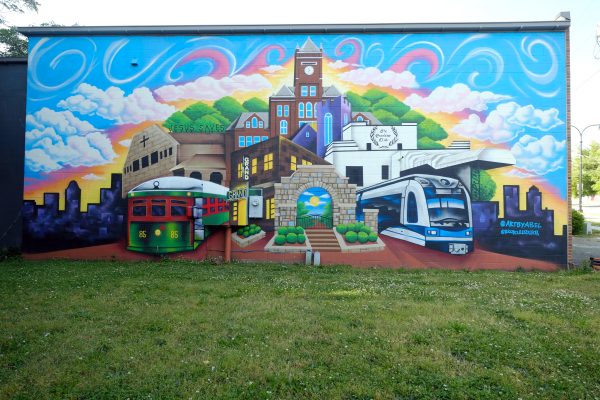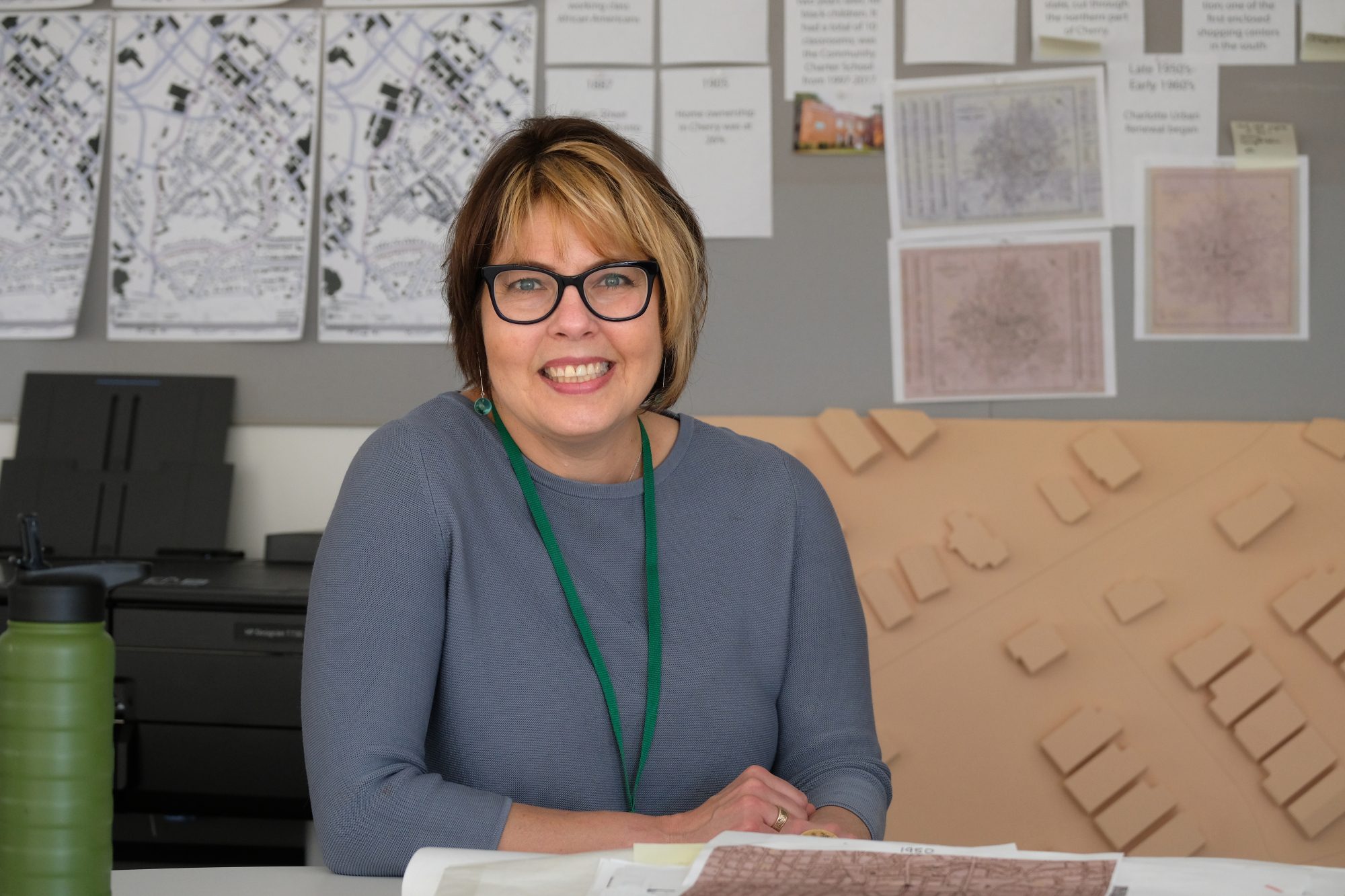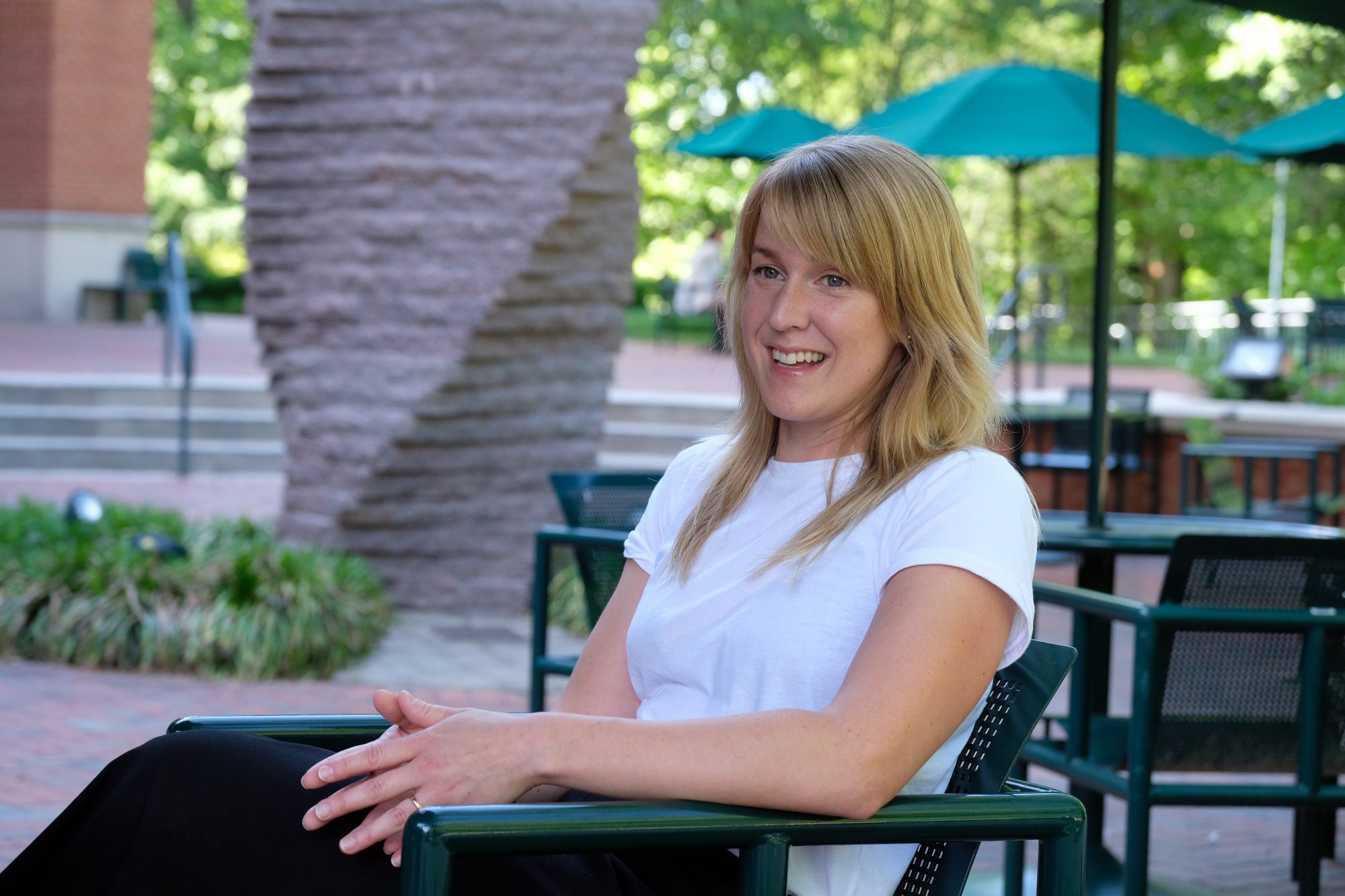Empowering and engaging with the community in West Charlotte

Empowering and engaging with the community in West Charlotte
By Mae Israel
Before joining the University of North Carolina at Charlotte as an associate professor of architecture and urban design, Nadia Anderson worked with a university design lab in Iowa that collaborated with community groups across the state to create new food systems — including a public market and an urban farm.
Isabelle Nilsson’s research work as an assistant professor in UNC Charlotte’s Department of Geography and Earth Sciences has included studies on why people and businesses decide to locate near light rail in Charlotte, and the location behavior of craft breweries and their impact on neighborhoods.
Now their expertise is focused on West Charlotte neighborhoods and the long-standing problem of “food deserts” and food insecurity. Both are key participants in the Community Innovation Incubator, a new partnership between UNC Charlotte, Johnson C. Smith University researchers and neighborhood residents to develop food retail options.
The researchers’ involvement comes with a twist: They and their colleagues negotiated with residents a process that establishes power-sharing and equal influence as work is underway to develop recommendations in coming weeks.
 “The traditional idea of the university is that we produce knowledge and sort of hand it out,” said Anderson, who started working at UNC Charlotte in 2016 after 11 years as a member of the urban design faculty at Iowa State University. “Those of us who do work engaging with the local community know there’s knowledge that residents bring to the table. We are working together to figure this out.”
“The traditional idea of the university is that we produce knowledge and sort of hand it out,” said Anderson, who started working at UNC Charlotte in 2016 after 11 years as a member of the urban design faculty at Iowa State University. “Those of us who do work engaging with the local community know there’s knowledge that residents bring to the table. We are working together to figure this out.”
The process, she said, “could be a prototype that we can do elsewhere.”
Anderson will be offering advice and research on urban design possibilities and challenges for West Charlotte food retail options.
A licensed architect, Anderson’s interest in working more closely with communities led her to leave practice with firms in Chicago, Warsaw and Vienna. She has written articles and made presentations at national symposia about the power of publicly engaged design practice.
photo by Nancy Pierce
“Cultural values are transmitted through our physical world,” she said. “The idea of empowerment is to broaden the field in terms of who is working and participating in design.”
For the West Charlotte food retail initiative, she added, “I believe in having the community involved in what might happen here, what it should look like.”
Nilsson has not previously participated in community-engaged projects, instead spending much of her time sitting in front of a computer with charts and graphs, she said. She is excited by the opportunity to work more directly with the community.
Nilsson started working at UNC Charlotte in 2015 after receiving a doctorate in spatially integrated social science, in which she combined a background in economics with geography. Her expertise is in figuring out what influences the location of businesses, housing and public transportation in certain areas.
For example, why are drug stores generally located at opposite corners of an intersection, and why are coffee shops clustered in a certain area?
As a part of her analysis of West Charlotte food retail, she is looking at the location issue from a different perspective, inverting the usual focus on what businesses want and focusing instead on what neighborhoods and residents need.
“The perspective has generally been from the company perspective,” said Nilsson, who also teaches in the public policy Ph.D. program at the university. “Now, we are turning that around and asking what kind of detailed solution works for this place and the people.”
She is evaluating how several locations on West Boulevard compare to other markets in Charlotte, and how the area’s demographics and socioeconomics influence possible food retail options.
Most traditional grocers, she said, have standardized business models that overlook some communities. photo by Nancy Pierce
“I believe we have a lot of creative minds on the project that will come up with really useful solutions,” Nilsson said. “I have seen a lot of thinking outside the box. Everyone is thinking what can work here and work for the community.”
Ultimately, she said, “We want to help bring positive change.”